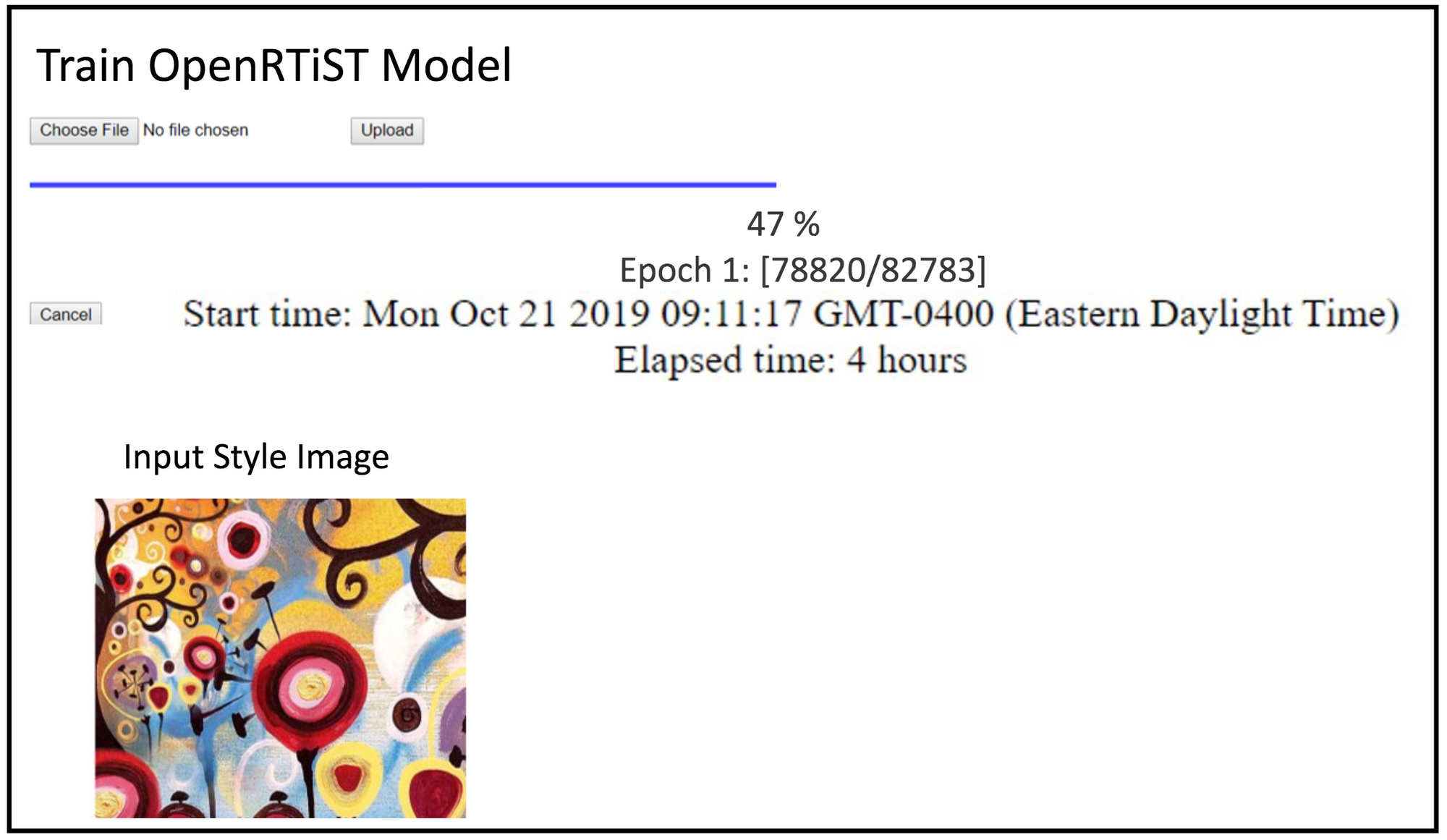Version 2.0 Released
We are pleased to announce the release of OpenRTiST 2.0. This version is built upon a new Gabriel platform that utilizes websockets and protocol buffers for communication between clients and servers. There are a large number of new features added as well.
New Features
- Uses the new Gabriel protocol of websockets/protobufs
- Style names, descriptions, and reference images are dynamically discovered from the server and no long statically defined inside the Android/python clients. Just drop new models, text descriptions, and reference images into the models directory and they will be fetched by the client upon connection.
- Autodetection of the environment allows running the backend on GPU (pytorch), CPU(pytorch), iGPU(OpenVINO), and CPU(OpenVINO) all from a single Docker image
- Local, on device execution is supported using pytorch-android (for a limited number of styles)
- A web portal for training a new model is available as both an Amazon AMI and encapsulated inside the Docker image; simply upload an image, hit the button, and receive a zip file containing the model

- Bug fixes for stereoscopic mode, confirmation of server deletes
Availability
The new Android client is available on the Google PlayStore and the new Docker image for the server is available on Docker Hub . The Docker images contains both the backend server code and a python client. Please see the README on Github for information on how to install/launch using the Docker container.
Backwards Compatibility
NOTE: This version of OpenRTiST is not backwards compatible. Using the new Android client with an old version of the Docker container backend OR using the old Android client with the new Docker backend is not supported. For posterity, we have tagged the older version as 'legacy' in both Github and on Docker Hub. The 'legacy' container can be pulled using
docker pull cmusatyalab/openrtist:legacy
and the previous release of the Android client is part of the 'legacy' release as an artifact .



 Thomas Eiszler
Thomas Eiszler